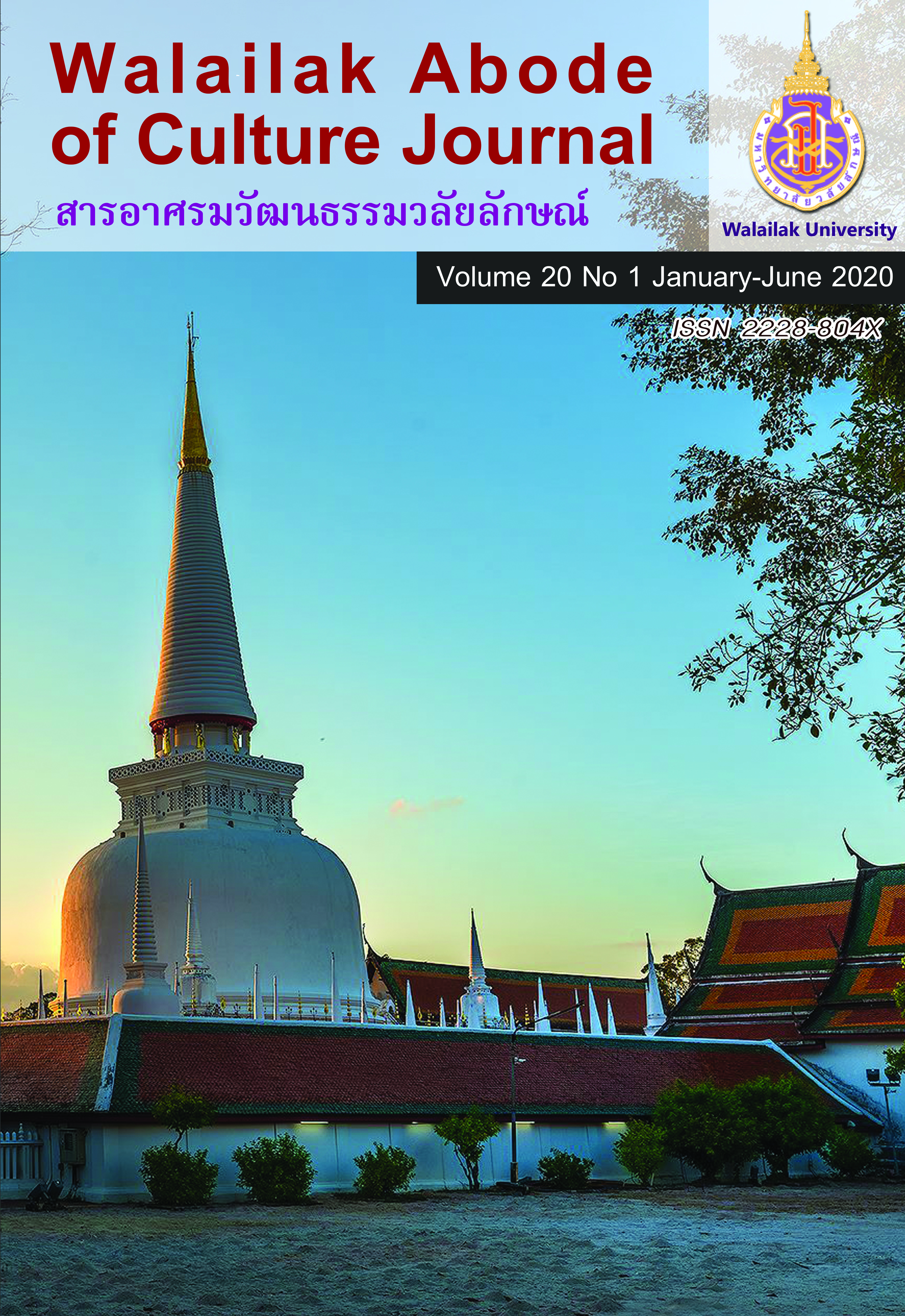“Tribal cloth in Lanna”: pattern, beauty and value of handicrafts of marginal people
Main Article Content
Abstract
This academic article presents the Lanna tribal fabric from 9 tribes, namely, Karen (Pakaguryor), Iu- Mien, Hmong, Lahu, AKha, Lizu, Dara - ang (Pa Long), Kachin and Lua (La Wue) which Is a group of people in the status of "marginalized". These tribal people are originally came from China, Tibet, Myanmar and then migrated to Thailand which is close to border areas with neighboring countries; such as Laos, Myanmar, Vietnam and some of them are living in 8 provinces in northern part of Thailand (Lanna) which are Chiang Mai, Chiang Rai, Lamphun, Mae Hong Son, Lampang, Phrae, Nan and Phayao. These tribes have a way of life and culture in using similar fabrics. The fabric is showed as an important cultural dress of the tribe from the past to the present. Apart from silver jewelry, these tribes can be distinguished by their use of fabric; especially in the form of clothing and accessories; both in their daily life and important rituals. Those fabrics are made by hand, using weaving, embroidery, writing, patching and sewing to create a pattern of tribal clothing. Their fabric is a handicraft with a high value that reflects the bond between the fabric and person. Woven fabrics emphasize the use of fresh and contrasting colors as a medium way of showing the gratitude to the mother, creativity in art and design which is hidden with various beliefs related to the fabric itself, refinement combined with perseverance, planning for work. Moreover, it presents the importance of the fabric in the way of life towards their tribe through patterns, and beauty from each tribe. The article also illustrates analysis of materials, patterns, colors, utility, production aesthetic and value of the tribal fabric in Lan na through changes in the current social context.
Article Details
© 2018 by Asian Journal of Arts and Culture, Walailak University. All rights reserved.
References
Chinalai Tribal Antiques. (2019). Textile and traditional. Retrieved from http:// www.chinalai.net/burm
Inter Mountain People s Education and Culture in Thailand Association. (2019). 10 Hill Tribes. Retrieved from https://impect.or.th
Office of the Royal Society. (2007). Knowing Thai Language. Retrieved from http://www.royin.go.th/?knowledges
Office of the Royal Society. (2011). Dictionary Royal Academy Edition 2554 B.E. Bangkok, Thailand: Siriwattana Interprint.
Sattayavinij, T. (2013). Right of the people at the country edge for living land: Case study of Hmong Paklang Community at Chiang Klang District, Nan Province. Eastern Economic Journal Burapha University, 2(1), 99-129.
Sareebutar, U.(2006). industrial product of technology. Bangkok, Thailand: O.S. Printing House.
The Support Art and Crafts International Centre of Thailand. (2014). Identity and Art on Hill tribe’s Garment Pattern. Bangkok, Thailand: Siam Color Print.


